Archive Page 46
October 17th, 2012 by dave dorsey
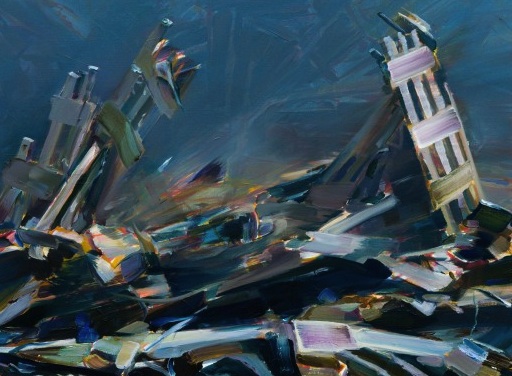
Duncan Wylie, Twin Towers, Oil on canvas
I wish I had the time and discretionary income to fly to Paris to see the new Duncan Wylie show at galirie dukan hourdequin. Instead, I’ll have to settle for the slide show at the gallery’s website. It may be a far cry from standing before the paintings, but the website offers a way to magnify the surface of the paintings by hovering your mouse over them and that goes a long way toward demonstrating how well Wylie paints. (Thanks to Harper’s for including one of these paintings in its current issue, which is how I found it. Over the years I’ve consistently discovered more interesting art from Harper’s than from nearly any publication actually devoted to the subject of art.) The new work is a tour de force of pure painting, technically gorgeous and masterful, framed by the semi-ironic context of its content, a series of apocalyptic images of disaster and collapse. It’s Franz Kline meets 9/11. Wylie appears to be working from photography of natural and human disasters, with images that hint at a tenacious struggle to survive in the aftermath. The brushwork is incredibly bold and confident, and his handling of value and hue accentuate the AbEx look of spontaneity while also, paradoxically, increasing the sense of depth and three-dimensionality in these scenes of ruin. Often using blues and grays, or other combinations, to hint at duotone photography, Wylie fades the backgrounds into a narrow middle range of values, achieving a sense of haze, distance, as well as hinting at the tension between immediate disorder and memories of whatever violence created it. In some cases, he appears to paint the background and then, on the dry surface, conjures a demolished structure with a transparent layer, so that the forms and lines bleed through the walls of the building in the foreground, giving it an eerie flesh-like translucency. Wylie’s sense of color is incredibly subtle and effective. His brushwork merges subject and style—the energy and seeming abandon of his paint application, as he unifies his image–and it both mirrors and works as a counterpoint to the explosive events that appear to have taken the world apart. His titles seem to have a cloying sense of sardonic amusement over the sense of tragedy he’s conveying—Afterparty, Yes, Love All—but it’s the only off-key note in the show. It’s hard to imagine work that offers a better fusion of representation and abstraction. Wylie’s style adopts the ragged structures of decay and collapse to accentuate paint’s ability to physically convey life, energy, and a fresh vision of the world.
October 15th, 2012 by dave dorsey
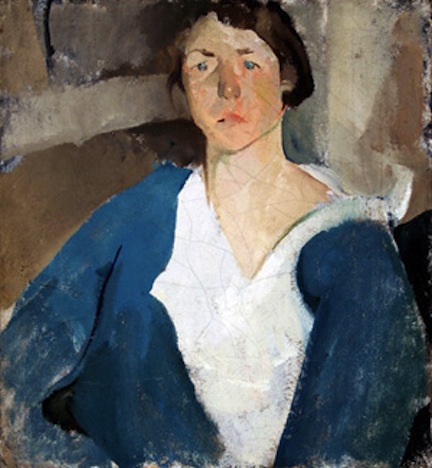
Edwin Dickinson, Elizabeth Finney, 1915, oil on canvas
October 12th, 2012 by dave dorsey
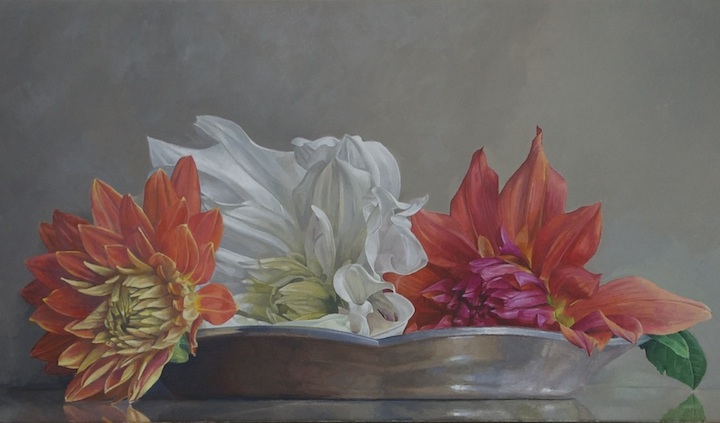
Dahlias, Just Opening
One last painting for the two-person show, with Brian O’Neill, at Oxford Gallery, opening next week. I put in eight hours on it yesterday. Don’t know if Jim will have enough wall space, it’s kind of large, but the challenge of completing it taught me a few things about how to handle paint. Never stop learning. I grew these dahlias in our raised bed, and picked them only a few weeks ago. We’re still cutting them, and will continue until the first killing frost, maybe tonight, but I’ll be out there covering them. Maybe I should just keep a spray going, as the farmers do. If they survive tonight, we’ll probably be able to cut them nearly into November.
October 10th, 2012 by dave dorsey
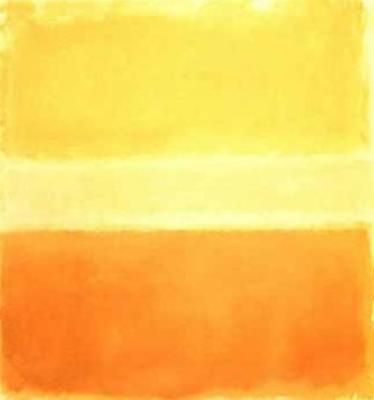
Some observations on and amused reactions to the Yellowism texts at www.thisisyellowism.com/:
“In the context of yellowism every feeling is a definition of yellow, every emotion expresses yellow color only. Sadness is about yellow and happiness is about yellow too. Pain is considered as a pure expression of yellow, orgasm as well. Inside the context of yellowism all emotions and feelings . . . images can arouse in potential viewers, express yellow color and nothing more.”
What they’re saying resembles both the erasure of all value—everything is reduced to yellow dust, basically—or the elevation of everything to one monotonous Truth. Both extremes force you essentially to give up the discriminations you normally cling to as a source of meaning and value. All art is about the same thing. Everything is either nothing or everything is holy. Take your pick. They have eliminated the dilemma by saying everything is simply about “yellow.” What you lose, in any case, is the system of values that elevates one thing over another in the world of art—or the world in general. (I find myself agreeing with both sides of this, both for and against what’s implied here.)
Consider yellowism as a totalitarian system. Two young “dictators” – authors of the definition and manifesto of yellowism decided that there is only one interpretation in this specific context. Everything is about yellow – this is the order, the final solution. It is imposed on you, you are not free to interpret, and you have to accept the only possible way of seeing things. This way and no other way.
This makes me laugh. Since nothing really changes in works of art itself when the Yellowists get busy with it. It remains the same. The art is regarded from a new context, that’s all. Yellowism is simply an assertion that all art is ultimately about “yellow color” without disturbing the diversity of meaning and interpretation that thrives in the hothouse world of art to such little effect on the course of most human lives. They stand above this hothouse and look down with amusement, pairing their fingernails.
That’s obvious that a monkey doesn’t see differences between ordinary reality, art and yellowism; it just MORE
October 10th, 2012 by dave dorsey
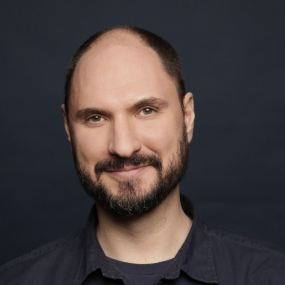
Loren Bouchard, creator of Bob’s Burgers
Occasionally, almost at regular but distant intervals, Marc Maron talks about art and painting on his excellent podcast, WTF. In episode 319, he interviews cartoonist, Loren Bouchard, about his life and briefly their conversation gets truthful about the life of painting in a way I love, on principle, even though I hate hearing the truth. Always. (I much prefer the delusional dreaming part, which usually leads into trouble. Like a devotion to painting, for example.) Don’t bother reading on if you’re looking for encouragement. (Praise I like. Always welcome. Encouragement I tend to laugh at. There’s no pot of gold at the end of this oily rainbow.) Painting is not an activity that makes sense, generally, as a way of life, even though I’ve been treading this painting path for decades. It’s good to keep in mind, during a journey like this, MORE
October 10th, 2012 by dave dorsey
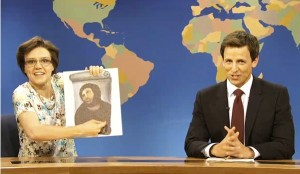
October 10th, 2012 by dave dorsey
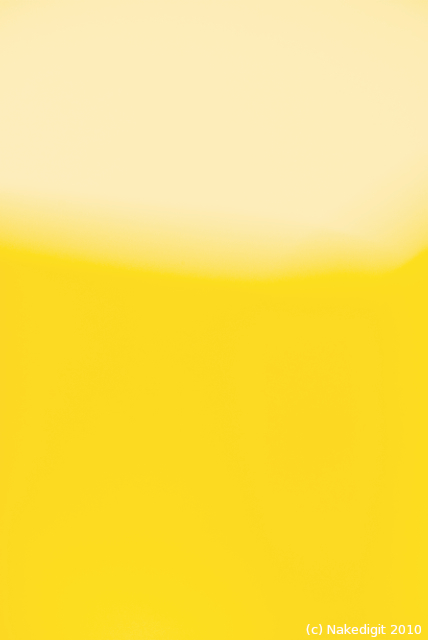
Rothko Homage 2 Yellow
Remember when John Goodman, in The Big Lebowski, discovered he was facing philosophers when he thought they were only three dweebs who used ferrets as weapons and dressed like Dieter hosting Sprockets on Saturday Night Live? His reaction: Oh my god, not nihilists. We’re fucked. You best listen to Mr. Goodman if you’re deeply invested in the world of contemporary art. It would be a sensible reaction to Vladimir Umamet’s recent act of vandalism at the Tate Modern where he tagged one of Rothko’s Seagram’s paintings and thus, by his own philosophy, turned it into a painting about nothing but the color yellow. I find myself oddly amused and cheered by his act of Yellowism. I doubt that it’s going to knock anything off the rails in the art world in the short term, but it may help free up some individuals to start making art without trying so hard to consciously make it mean something. And it might get a few people out of the art game altogether. If you can be talked out of it (and you should be, trust me) you shouldn’t be doing anything as nutty as making art to begin with. Art should be like the Zen monastery where they chase you away fifty times and then finally let you in out of pity because they finally realize you just can’t help it.
Thanks to my Brooklyn friend Lauren, who is a bit of a yellowist herself, but is in denial about it (so far this evening anyway), I started reading up on Yellowism. The manifesto is an interesting, monotonous and nihilistic incantation that keeps asserting its authors’ right to reduce all art to nothing more than a symbol for the color yellow. Umamets and Marcin Lodyga—the founders of yellowism—amiably claim their “new context” for art nullifies everything in art so that all art means nothing but the color yellow. In the context of yellowism—in a yellowistic chamber, as they put it—all meanings, all diverse significance, all styles and shapes and mediums, signify nothing but yellow. By tagging the Rothko and then surrendering to police, Umamets was calling attention to his philosophy and also leaving behind a painting that didn’t feature much yellow but was about nothing but yellow. Rothko may have thought otherwise when he was hard at work on his subversive painting, commissioned for the Four Seasons restaurant. He wanted it to be oppressive, part of a suite of paintings that would surround and envelope the restaurant’s patrons with Rothko’s especially unsunny weltschmerzen. I stood in that Rothko room last year at the Tate Modern, when I had a painting in a London pop-up exhibition, and I didn’t stay in that place for long. The whole museum felt like a prison: cold, imperious, and impersonal. Rothko did the paintings, now hanging in that room, right before he killed himself. By putting his mark on the work, Umamets was claiming to make the painting about nothing but the extremely sunny color yellow. (Though there’s nothing sunny or unsunny about yellowism itself. It’s the color of what should have been swirling at the base of Duchamp’s Fountain, for one thing and Umamets claims to be doing to Duchamp what Duchamp did to art: recontextualizing. If Duchamp can say a urinal is art, then Umamets can say any work of art is about nothing but yellow, simply by surrounding it with a new context. That’s the logic, and it’s cleverly seductive, a bit of a chess move, which is also Duchampian.)
Here’s the thing, as Alec Baldwin says way too often now. These nihilists are basically threatening to get yellow on your ass. The act of vandalism was small potatoes. The philosophy behind it is saying art itself has reached a point of exhaustion, a dead end, where meaning and purpose is so fungible that it doesn’t really exist anymore. Hey, tell me about it, Vlad. The tract about Yellowism is something to enjoy and even skim with a bit of wicked glee–it’s very funny in places and the Russian accent is perfect. As you do, think, along with me, it’s about time. They’ve pushed postmodernism to a dead end, particularly postmodern criticism. What Yellowism leaves in its wake, if you recognize the absurdity of the kind of critical thought the yellowists are attempting to skewer and also to take to its ultimate extreme, is something only an individual artist can answer through the act of making art. A yellowist says all works of art can be reduced to nothing but metaphors for the color yellow and they can make art works mean yellow by simply placing them in a “yellowistic chamber.” (Of their monomaniacal critical thought.) It’s a quick and dirty deconstruction of art in the most simplistic way. In my view, whatever can be reduced to the color yellow in a work of art, when a yellowist gets done with it, was beside the point to begin with—what actually matters will always resist interpretation as content. The yellowists don’t go so far as to say this, but by taking all ostensible meaning in art and reducing it to the color yellow, they force you to realize that this is where postmodern criticism leads, the arbitrary domination of the critic over the work itself, as well as the tired dominion of the intellect over a mysterious, yet integral act of imagination.
More on this tomorrow.
October 3rd, 2012 by dave dorsey
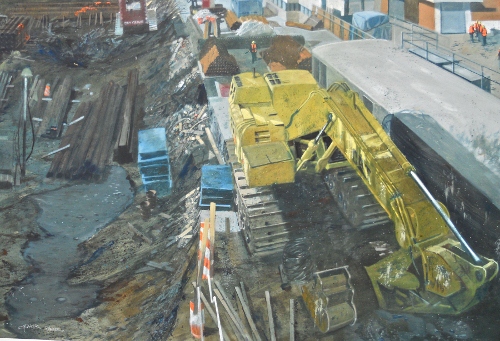
Sleeping Cat, Chris Baker
When I stopped in to pick up one of my paintings from the back room at Oxford Gallery yesterday, I couldn’t stop looking at Chris Baker’s new paintings. He’s one of three outstanding artists on view in Water Works. All three are exploring the power of a water-based medium with amazing skill. Chip Stevens’ assurance with watercolor reminds me of a Japanese or Chinese painter’s fearless, irrevocable brushwork and use of negative space. And Barbara Fox’s images obsessively and meticulously return to glass globes strewn across surfaces they absorb and reflect. They struck me as a visualization of a heightened state of mind where the boundary between self and other has dropped away—no small achievement for what are essentially highly realistic still lifes. So I’m not doing justice to the masterful work of his co-exhibitors by focusing on Baker, yet Baker’s work calls for celebration in a special way because I’m finally beginning to feel what he’s up to. I’ve always admired his prolific ability to evoke light and form as well as a more ethereal sense of time and place in his scenes, but often I’ve wanted MORE
October 2nd, 2012 by dave dorsey

The latest group show at Viridian Artists, which came down a week ago, introduced me to an artist the gallery represents posthumously, someone whose work I’d glanced at in the past but hadn’t really seen. The show opened my eyes and heart to the subtle depth of Bruce Rosen’s work. His wife, Maxine, has been keeping her faith in his work alive by maintaining a long-standing membership at Viridian on his behalf. The Viridian website appears to be the only place you can get some idea of what he was doing in his quiet, philosophically sophisticated drawings in various media, mostly gouache and chalk on paper. What I’m having difficulty admitting is that this process of having my eyes opened has made me rethink, in some respects, my general philosophy of how art ought to operate on a viewer. This slightly puzzled admission is laden with paradoxes I’m not sure how to sort out—more on that in a bit. These new mental adjustments remind me of conversations I had earlier this year with A.P. Gorney in Buffalo. One of his personal tenets—art is not visual—stuck in my craw because for me painting needs to work subconsciously in an exclusively visual way, a peer-to-peer connection, as it were, right brain to right brain, leaving the left brain out of the conversation entirely. It’s my extreme response to the decades of conceptualism in art, which now seems to have MORE
September 29th, 2012 by dave dorsey

German spider projections
Wish I’d thought of this.
September 28th, 2012 by dave dorsey
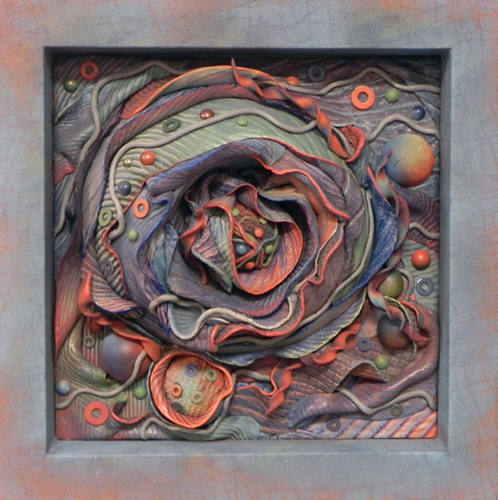
Hydra – Azur, 15 x 15 x 3, sculpting epoxy, tacks, nails, washers, acrylic, wood and canvas
When you think of Hawaii, the first thing that comes to mind probably wouldn’t be Pulse, the new solo show of abstract constructions by Carol Brookes on view now at Viridian Artists. Yet that tropical island is where some of the most compelling pieces in this show, the Pulse Hydra group, originated. Her encounter with that lush yet volcanic landscape is what infused itself into her materials when she went back to work in her Chicago studio. The results are startlingly organic, full of shapes that evoke plant and animal forms, sometimes lips, eyelids, and labia. The Pulse Hydra pieces are wildly colorful, MORE
September 26th, 2012 by dave dorsey
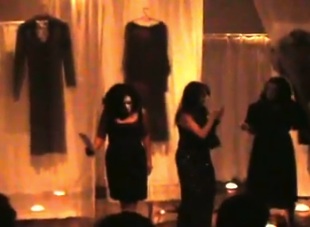
Vernita N’Cognita’s The Black Dress at Soho20
Vernita N’Cognita offered a cool and subtle performance last week, The Black Dress, at Soho20, on 27th St., a few floors down from Viridian Artists, where she presides as director. It was a departure for her, the work of a troupe, rather than a solo act, following on her successful partnership with another artist in Germany this summer for Trail of Sighs and Whispers. This time it was a simple and beautiful meditation on what is less an article of clothing and more a sort of sartorial best friend: the little black dress. (Guys have got the black t-shirt, so we kind of understand, but it isn’t the same.) The black dress is the ultimate way to both disguise and reveal the female form, something that gets called upon as a woman’s go-to apparel for a variety of situations, great and small, from cocktail parties to funerals. N’Cognita teamed up with DeeDee Maguire, Veronica Pena, Amanda Flowers, and Tania Sen for a performance backed by music from Charles Ditto—with a perfect, impromptu and More
September 25th, 2012 by dave dorsey
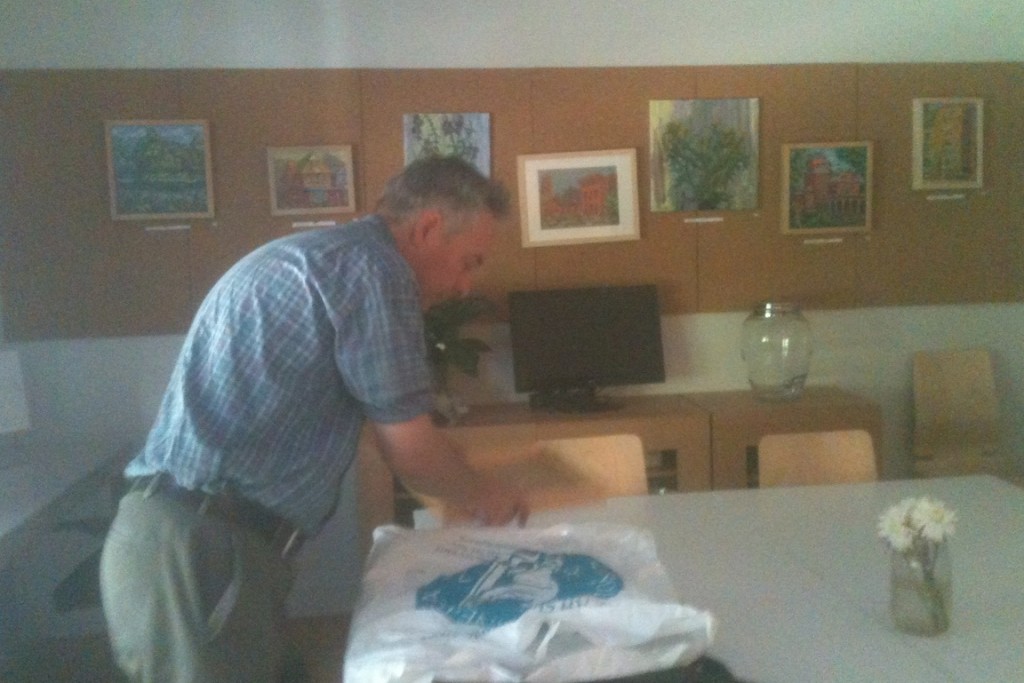
John Lloyd putting up his new show
The better I get to know John Lloyd, the more I admire him. (True of his wife, Jane Talcott, as well, but John’s the one who keeps putting his work up in small solo shows non-stop, anywhere he can find space.) Last weekend, when I drove into the city, he’d recently taken down his work at Salon d’Art and was putting it up at a workspace in Tarrytown called W@tercooler. So on my drive into Manhattan last week, I detoured up across the Tappen Zee and into Tarrytown, which turned out to be a beautiful little village tucked into the hills just east of the Hudson River. I felt as if I were in Vermont, with school children wandering along the main drag and cars stopping for any pedestrian who wandered across Broadway, which was more or less the northern extension of the same thoroughfare that runs through Times Square.
MORE
September 23rd, 2012 by dave dorsey
“. . . there are shows so imbecilic that they cry out for some kind of intervention. Intentionally or not, they exist as affronts to the artistic community through self-seeking sensationalism or sheer empty-headedness, and play into the hands of those in the wider culture who would marginalize boundary-pushing visual expression even further than it already is.”
Nicely put about lousy art. Big problem though. Boundaries? There is no crying in baseball, and there are no boundaries in art. It’s all been done. All frontiers have been opened. Everything is permitted. There is no art God. When are people going to catch up to this, finally? It’s been this way for half a century now. That’s the problem. There’s nowhere else to go. Yet we keep going. Reality: There’s nowhere to go. Necessity: I must go! Oh Godot, as a friend of mine likes to sigh. As an artist, the only boundaries I recognize are graphite lines, and I try not to violate them.
September 21st, 2012 by dave dorsey
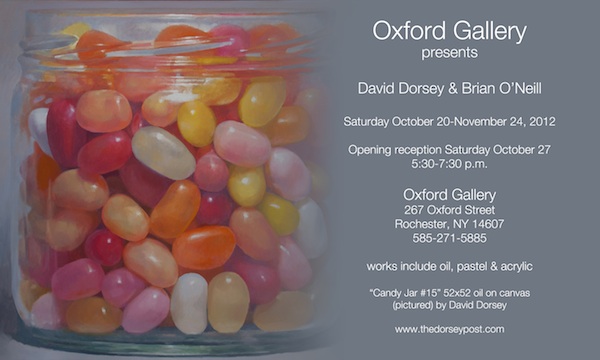
September 19th, 2012 by dave dorsey

New Dams in Winter, detail, Neil Welliver, 1982
I know it’s bullshit to do two Art I Loves in a row, but I’m busy painting for a show in October, so bite me.
Sorry about that. I’m under pressure. Ok, so instead of just posting an image, I’ll let Neil Welliver say some things I’ve never forgotten since I first read them, things I think about often when I paint, especially when I’m “going back over” which Welliver said he never did. I usually think of Welliver when the work I’m doing isn’t remotely like Welliver’s.
Anyway, here’s an excerpt from an interview in a book published 25 years ago, Realists at Work, by John Arthur, (Watson-Guptil Publications) which I bought probably 20 years ago. It’s fun listening to Welliver sound as if he’s patronizing Fairfield Porter, who seems more and more influential a quarter century hence, especially in a lot of work I’ve seen the past few years in New York City. Welliver and Porter’s work both seem to spring from similar imperatives about simplicity and transparency of execution, paint as an end in itself rather than just a means, and the abstract qualities of representational images. His sense of color is different from Porter’s, not nearly as warm nor as varied, but you still have the sense that both artists wanted you to see the paint on its own terms, paint as what it is you’re getting, even as you see through it into the scene. Both thought of themselves as painting the light between objects, light as a field of energy, rather than representing a set of objects. Some of the Q/A:
When Porter did a really top-notch painting, he was as good as one can get . .
I think that the Fairfield Porter paintings that are good are very, very good American paintings. God knows that they can never be dismissed. I can’t imagine that. But whether Fairfield’s a major painter or MORE
September 18th, 2012 by dave dorsey
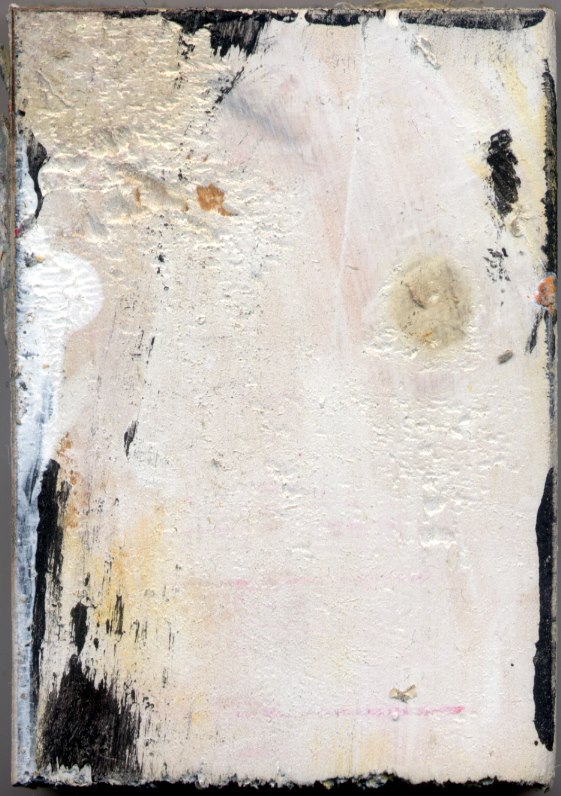
A recent painting from Kurt Ketchum.
September 13th, 2012 by dave dorsey
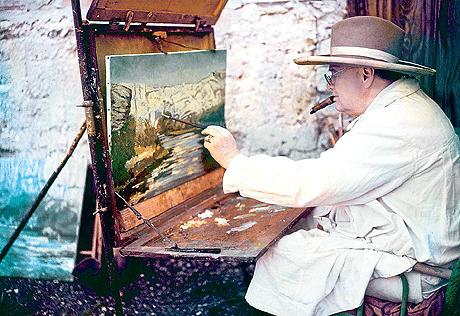
Churchill at his easel
”Happy are the painters, for they shall not be lonely. Light and colour, peace and hope, will keep them company to the end of the day.” – Winston Churchill
From Wired.com: In between penning epic one-liners, drinking, and saving western civilization, Winston Churchill picked up oil painting as a hobby. Inspired by the work of John Singer Sargent and Walter Sickert, Churchill managed to finish over 500 paintings, when World Wars weren’t getting in the way. He focused on calm landscapes — relaxing fare to keep his mind off of military failures in his past and the Panzer battalions amassing on the other side of the English Channel.
His aim was contentment, not critical acclaim. He said ”Happy are the painters, for they shall not be lonely. Light and colour, peace and hope, will keep them company to the end of the day.”
Though he didn’t pick up a paintbrush until his 40th birthday, by the end of his life Churchill was a knight, a Nobel Laureate, but also had his paintings honored by the Royal Society of the Art under the pseudonym “Mr. Winter.” Today his paintings are collected and sold at auction where one recently sold for over a million dollars.
(Click on the image of Churchill for a contrary opinion about the happiness of painters.)
September 13th, 2012 by dave dorsey

Chuck and Andy
“Photographer Andy Freeberg as been fascinated with the gallery and museum worlds for a long time and often turns his camera on the dealers, gallery patrons, artists, museum guards, and their interplay with the works of art themselves. His project Guardians, about the women that guard the art in Russian museums, won Photolucida’s Critical Mass book award and was published in 2010. One of my favorite series, Sentry, takes a look at galleristas that stand guard at the reception desks in the world of Chelsea galleries in NYC.”
–Lensscratch
September 7th, 2012 by dave dorsey
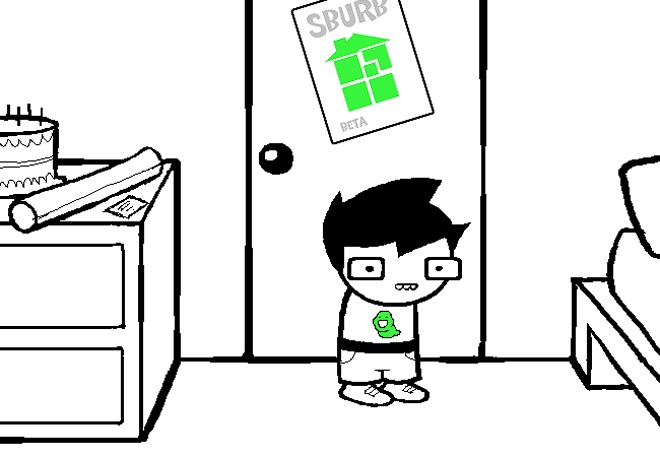
Homestuck, a “a book/webcomic/Flash animation/videogame hybrid”
When I heard that a webcomic called Homestuck had raised three quarters of a million dollars on Kickstarter within 24 hours for a videogame version, I set out to research what it was. Three hours later, I was not much closer to understanding it.
Homestuck, and the rabid fandom of its millions of readers, is difficult to explain. Entire blogs have been started just to answer the question, “What is Homestuck?”
Here’s the best I can do: It’s a book/webcomic/Flash animation/videogame hybrid, all created by Andrew Hussie. When Hussie revealed a Kickstarter campaign to fund creation of a Homestuck adventure game on Tuesday, his fans helped him meet his $700,000 goal within just one day. He plans to release the game in 2014.
—Wired.com


















